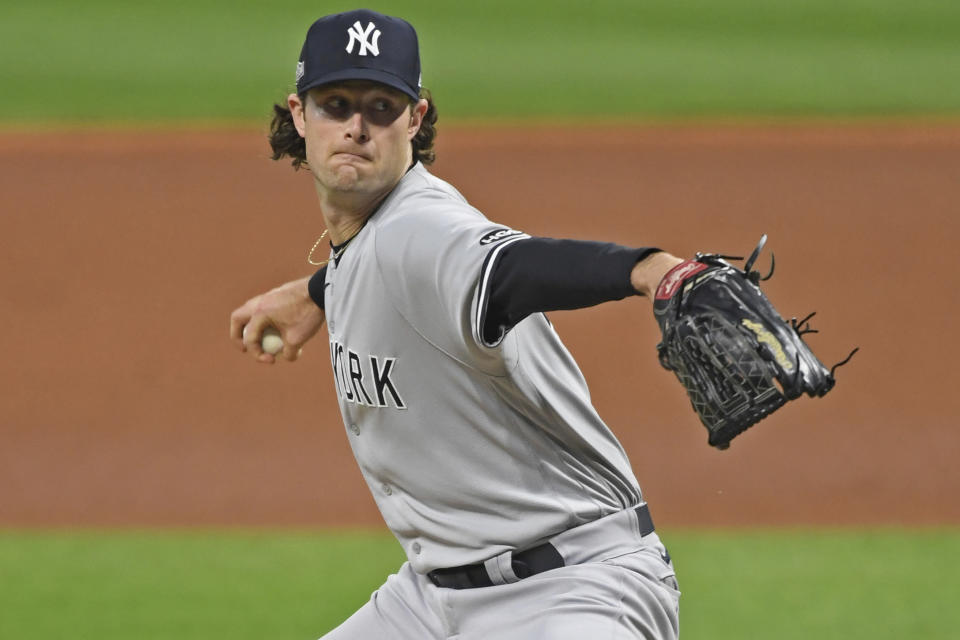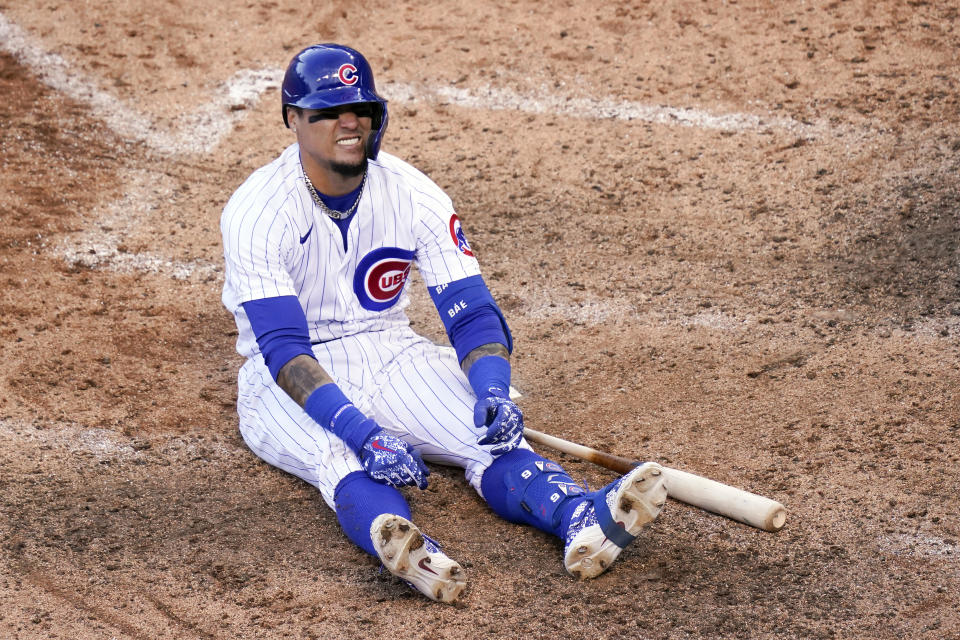What we think we know after MLB's whirlwind wild-card series
MLB’s expanded postseason field has been whittled from 16 teams to eight with a rush of games in the best-of-three wild-card series. Some results were expected (the Dodgers romped over the Brewers) while others came with surprises (the Marlins ousting the Cubs) that flowed from the condensed format.
What comes next is a return to the general playoff structure baseball fans are used to — minus home stadiums and off days as the teams move to neutral sites.
Before the Division Series begins, we stepped back and took stock of what lessons we might have learned from a whirlwind week of high-stakes baseball.
The Yankees might already have gone as far as their pitching will take them.
In their two-game wild-card series, the Yankees scored 22 runs and hit seven home runs against one of the game’s premier pitching staffs, seven of the runs and two of the home runs in 4 ⅔ innings against presumptive Cy Young Award winner Shane Bieber. A lineup of big names and heavy bats might have suggested the Yankees, after being buried by the Tampa Bay Rays in the AL East, had found themselves again.
That is, if you ignored the other halves of innings, where pitchers not named Gerrit Cole and Aroldis Chapman were getting knocked around by one of the worst offenses in baseball. The Rays were only slightly above average as an offense and scored nearly five runs a game against the Yankees in the regular season. Also, Cole might only be available for one start in a best-of-five series that will be played without off days. Cole, who will start Game 1 on Monday in San Diego, has not pitched on three days' rest in the big leagues, including in the postseason. - Tim Brown

It's a true war of attrition.
Unlike most postseasons, the 2020 installment won't come down to which team is built best or plays the best brand of October baseball. Based on what we've seen so far, it's looking more and more likely it will come down to which team has the most major-league-caliber players left standing.
In the wild-card series alone, we saw nearly a dozen important players ruled out or forced to leave with injuries. That’s on top of the many regular players who were already injured.
The San Diego Padres were hit the hardest. They only learned they would be without their top two starting pitchers — Mike Clevinger and Dinelson Lamet — the day the postseason started. Some teams survived despite the injuries. Others, like the Chicago White Sox and Milwaukee Brewers, were clearly hurt by the losses.
Here's the most concerning part: The real grind hasn’t even started yet. There will be no off days during the Division Series or League Championship Series. That means pitchers will be taxed further, position players will have less time to rest, and managers will have to dig deeper to make it through nine innings. If you watched the wild-card series, you know some teams that advanced barely had enough pitching options available to survive that.
The lack of depth will be an even bigger problem in a longer series. It will lead to more marathon games filled with more pitching changes, and more outcomes that feel more random than decisive. That is not what’s best for baseball. - Mark Townsend
The Central is so weak it may have skewed the postseason and awards voting.
Three-game series are too small a sample to be conclusive about anything (some might say the same is true of 60 games). Any team can drop two games to any other team in a fluke. But seven separate series? That's closer to statistically significant. The NL and AL Central — who played exclusively each other this season as schedules were kept regional to limit travel — sent seven teams into a field of 16 this October. All of them have already been eliminated. They combined to go 2-14.

The Reds and Cubs scored one run in four games between the two of them. Dating to last season, there was some latent understanding that Central divisions were comparatively weak. Rather than keep them out of October, the regional play this season saw the mediocre-to-good teams beat up on the terrible teams and each other until they were disproportionately represented in the postseason and in a number of the individual award races. No one player's performance should be discounted because of the competition. But, along with so many things this year, the impact that this had on the eventual results undermines some of the integrity of the season. - Hannah Keyser
What I want most is a Dodgers-Yankees World Series.
There are some compelling teams and players left in this postseason. And with apologies to Fernando Tatis Jr., Marcell Ozuna's selfies and all the Astros jokes that would happen if they made the World Series, what I really want most is the Dodgers and Yankees.

The first round gave us both teams at their best — the Yankees powering past Cleveland's pitching, which we thought would be a daunting task. The Yankees made it look easy. The Dodgers made beating the Brewers look easy (and maybe it was). It was a sparring session for Clayton, Mookie & Co.
After four fun days of playoff baseball, it was clear that the best conclusion of all this would be the Yankees and Dodgers, two of MLB's most famous teams, duking it out for the trophy. Not only would it be great for ratings, but it would give us a handful of stars. It would be weird that it would happen in Texas, but a somewhat fitting middle to meet in, right?
Also fitting: The last time the Dodgers and Yankees met in the World Series was 1981, a season notable because it was kinda funky like 2020. There was a strike in the middle of the season, so the teams played two halves with a two-month break in the middle. The Dodgers won that World Series in six games. Could it happen it again? We'll see. - Mike Oz
More from Yahoo Sports:

 Yahoo Sports
Yahoo Sports 